Wall decor: options for painting in interior design
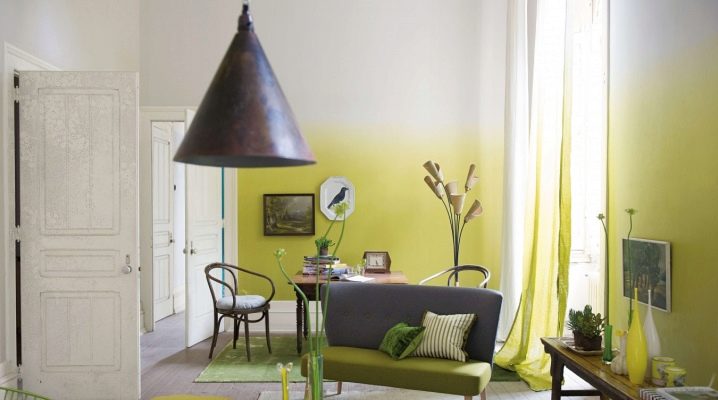
Painting walls in an apartment or a private house is a very important process that should be treated responsibly. This type of finish is a great alternative to traditional wallpaper. If you want to make your home not only hospitable, but also original, then paint or decorative plaster is what you need.
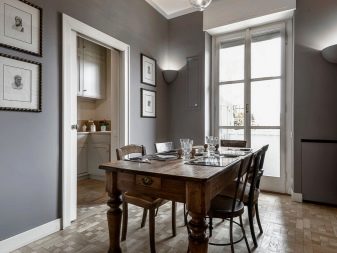
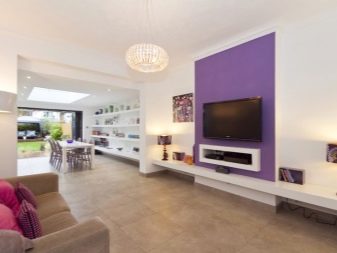
Design features
Despite the rich assortment of various finishing materials, many people still turn to good old paint. If you apply it on the walls carefully and correctly, then you will get a very harmonious and cozy interior, in which it will be pleasant for you and your guests to be.
One color or another of the walls can have a significant impact on the mood and atmosphere in the house.
For example, coatings that are too dark will look depressing, and in such conditions, household members are unlikely to have a positive mood. As for the overly motley and cheerful interior paints, they can give you a headache. This suggests that the choice of a particular palette in home design should be taken very seriously.
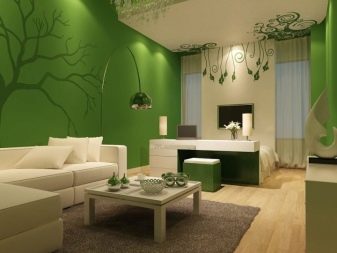
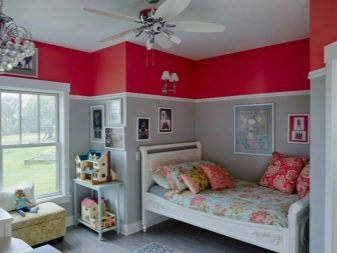
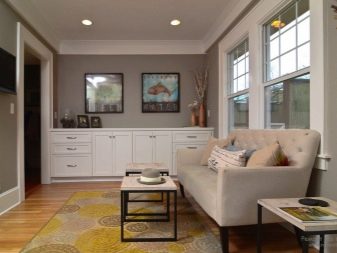
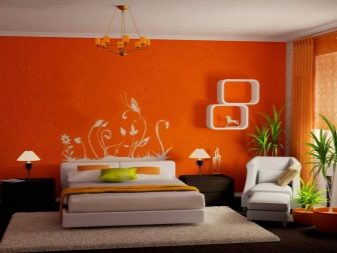
A distinctive feature of modern paints is that with their help you can hide some of the imperfections of the walls.
Not all mixtures are suitable for this, but it will not be difficult to find them in the store. Of course, in this case we are not talking about serious and too noticeable damage or unevenness of the walls.
It should be noted also the unusual design, which is obtained as a result of the use of paints of suitable shades. One has only to enter a room with painted walls, and you can immediately notice the lightness, freshness and originality of the ensemble.
Do not think that accent walls in a room can be formed only with the help of classic wallpaper.
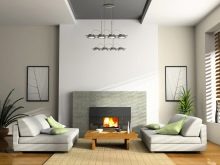
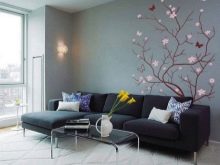
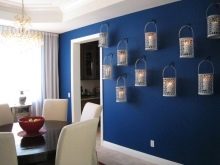
In this case, you can also use paint of a contrasting or slightly different color tone.
Special stickers are often applied to such a detail in the interior, demonstrating a variety of prints and patterns.

Advantages and disadvantages
Painted walls have their own pros and cons.
So, the positive aspects of paint finishing include:
- The ability to hide cracks in its texture and other minor defects.
- The ability to change the color of the walls over time. If you suddenly want to repaint the surfaces in your home, then this will be easy.
- Washable. Walls finished with high-quality and durable paint can be washed and cleaned many times. This characteristic is especially relevant if small children live in an apartment or house, who often stain and paint wall coverings with pens, paints and felt-tip pens.

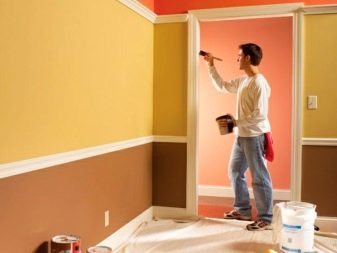
- Rich assortment. It is impossible not to note the gorgeous assortment of paints. Today, every buyer can choose for himself the color scheme of his favorite shade to decorate his home.
- Selection of surfaces. If earlier the texture and surface of all paints were the same, today different mixtures can differ in their execution. Today, building materials stores offer unique glossy, satin or velvety finishes in a variety of colors.
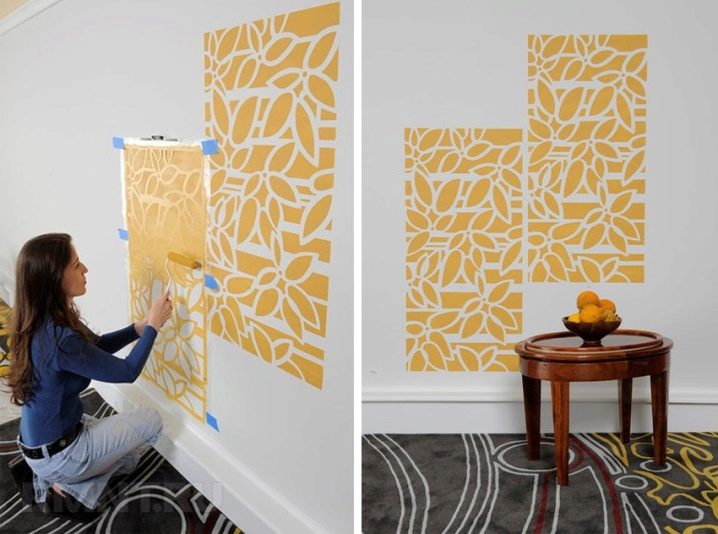
Despite the many positive qualities, painted walls have their drawbacks:
- Preparing the walls. Before applying paint to floors, they must be carefully prepared, which often takes a lot of time. The surface of the walls must be perfectly flat and clean, otherwise various irregularities and roughness will be conspicuous.
It is worth noting here that not every home craftsman will cope with this work. As a rule, the owners turn to specialists, which requires additional expenditures.


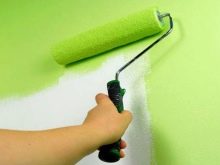
- The complexity of the application. If you want to cover all the walls perfectly the first time, then you should consider that without certain skills and experience, it will be almost impossible to cope with this task.
- The need for periodic cleaning. Painted walls in an apartment or private house will have to be washed from time to time. If you neglect this process, then they will gradually begin to absorb dust and even soot that is elusive to the eye. After some time, the particles will simply clog the pores of the wall covering, and it will stop "breathing".
- The high cost of designer paints. To paint all the walls in a particular room in one color is not the most original solution. To diversify the interior design, it is worth applying various patterns and patterns to the floors. For this, designer paints are needed, which are quite expensive.
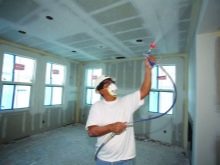

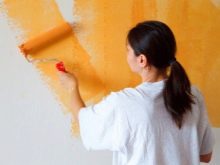
Unfortunately, there are no ideal finishing materials on the market, and each of them has its drawbacks. How serious the listed disadvantages of wall paints are - each consumer decides for himself.
Of course, a lot depends on the owners themselves. If you treat the wall coverings with care, do not forget to wash them, then they will last a very long time and will look attractive.
Also, do not skimp on buying paint. A low-quality composition can quickly lose its aesthetic appearance, and it will have to be changed to a new one.
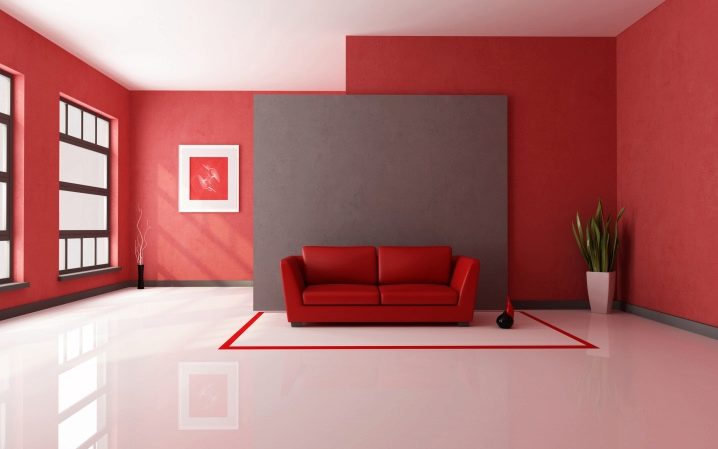
How to choose a color?
As already mentioned, the color of the wall finish plays an important role in interior design. It is he who sets the tone and mood for the whole ensemble, so his selection should be carried out carefully and deliberately.
It is unlikely that pastel colors will ever go out of fashion. Such scales are distinguished by their tenderness and softness. In a room with pastel walls, you will feel calm and peaceful, therefore designers recommend using such palettes in the design of bedrooms.
Classic colors are also very popular in apartments and houses, but you should be a little more careful with them.
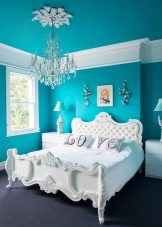
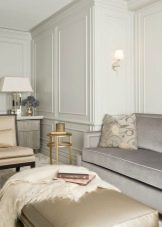
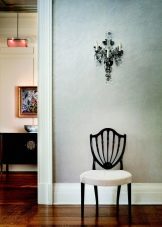
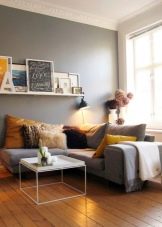
For example, a fresh white color, which is able to visually expand the space, in its excess can form a repulsive image of the interior, reminiscent of a hospital room.
To get rid of this impression, designers recommend using a variety of bright accents or colored details of decor and textiles that can easily dilute the excessive whiteness.
In addition, too light paints are easily soiled. For example, beige, pale cream or the same snow-white walls will get dirty easily and quickly. They will need to be washed more often than other colors.
Dark classic shades (black, dark brown, gray) should also be used with caution. Such palettes should be avoided when it comes to a small room, as they can visually make it even tighter.

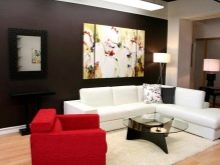
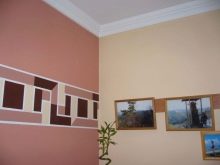
It is advisable to use dark palettes in small quantities. For example, you can paint one of the walls in a beige room with a chocolate shade. This will create an attractive accent surface.
Contrasting combinations of light and dark colors look interesting.
As a rule, such combinations are used in the design of modern interiors. However, not everyone likes these tandems. Some people find contrasts that are too bold and annoying.
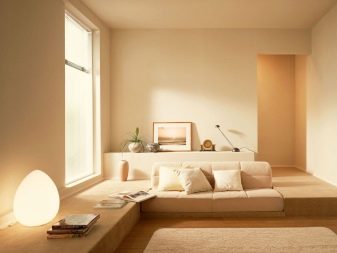
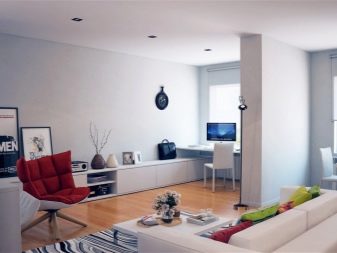
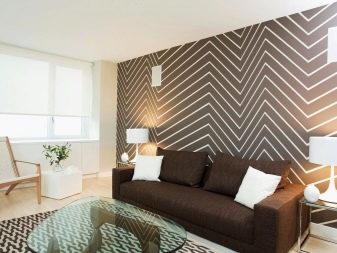
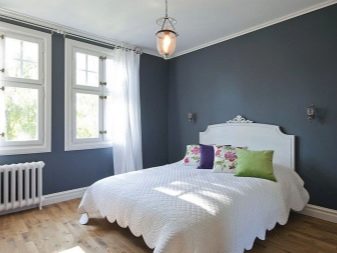
In the decoration of the home, you can also use bright, saturated colors. These cheerful colors can breathe life into the interior and make it positive.If you painted the walls in the room in rich colors, then the furniture against their background should be discreet. It is advisable to choose interior items of calm and neutral colors. If absolutely all the components of the situation are made in bold colors, then it will be uncomfortable to be in it.
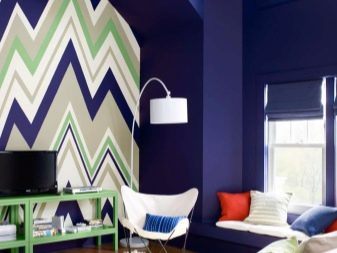
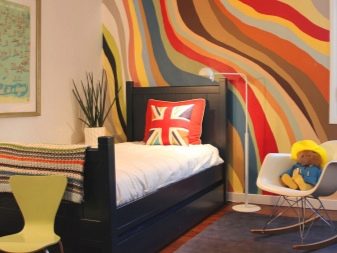
Many designers advise painting walls in the following attractive colors:
- Calming green.
- "Sweet" pink.
- Deep blue or emerald.
- Positive yellow.
- Juicy orange.
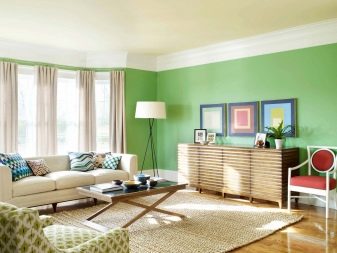
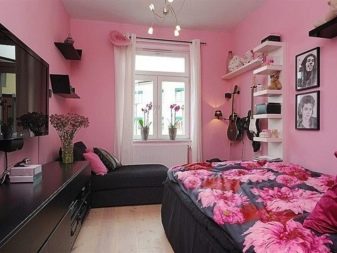
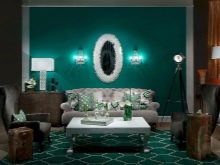

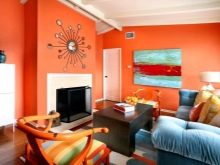
- Caramel.
- Cream.
- A neutral shade of ivory.
- Sky blue.
- Classic white and beige.
- Black and dark brown (in moderation).
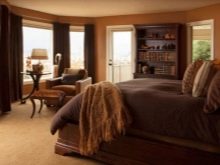

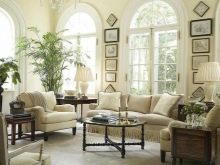


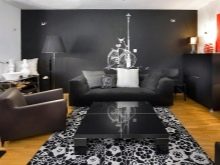
Beautiful combinations
Different colors can be combined in one interior. Such solutions look much more interesting than a single color scheme. The selection of color ensembles depends not only on the taste preferences of the owners, but also on the style of the interior.
You can use several different tones at once. For example, it can be colors contrasting with each other, dividing the room horizontally. If you like bright, but not annoying solutions, then you should take a closer look at the combination of white / pale gray (on the large lower half) and red / orange (on the upper part of the walls - under the ceiling).
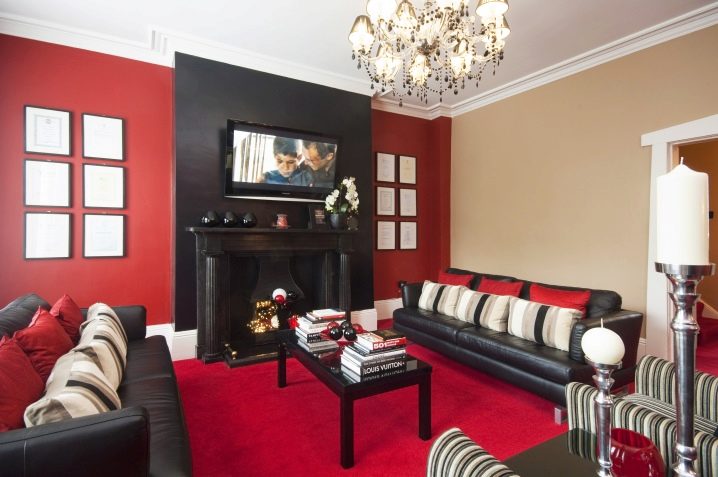
In classic interiors, different ways of combining gray colors (with a difference of a couple of tones) will be appropriate. They can also be thinned with brown or beige surfaces. The main thing is to stick to calm and neutral colors.
Accent combinations look harmonious in many interiors. For example, one of the walls in a room can be painted in a contrasting color or a color that differs by a couple of shades.
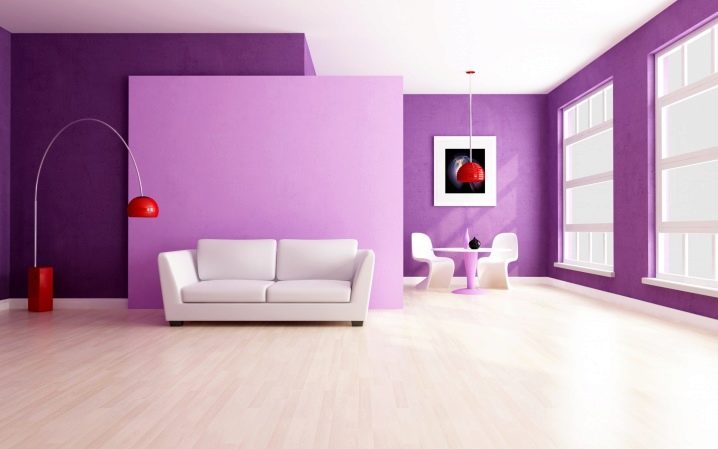
The classics include wall coverings with horizontal or vertical stripes. If we are talking about wallpaper, then everything is much simpler than with paint. However, even with such mixtures, you can make the walls "striped". It is permissible to combine stripes of both contrasting and calm and discreet shades, for example, pink and peach or beige and caramel.
In recent years, colors with an ombre and gradient effect have been recognized as a trend.
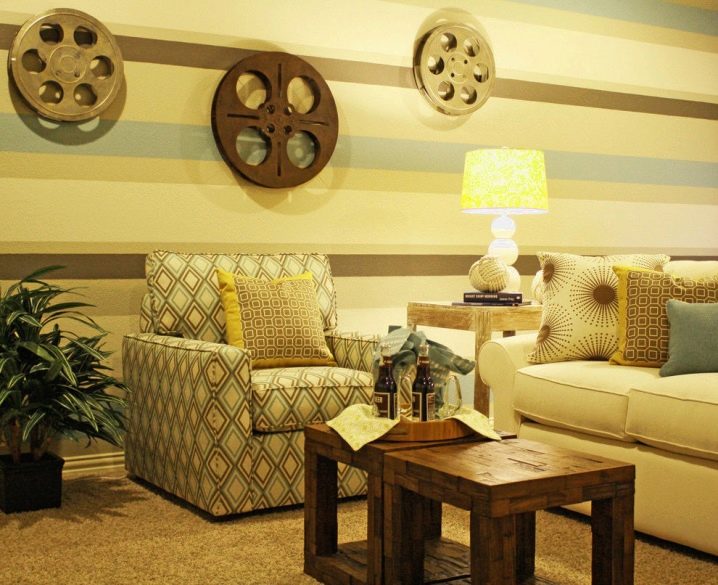
Such a finish represents a gradual transition from one shade to another (for example, from light to dark or from dark to light) on the surface of the walls. These unique solutions are perfect for modern interior styles.
You should not use several bright colors in a room that are sharply contrasting with each other.
Such color solutions will not only irritate household members, but can visually "break" the layout and noticeably distort it.

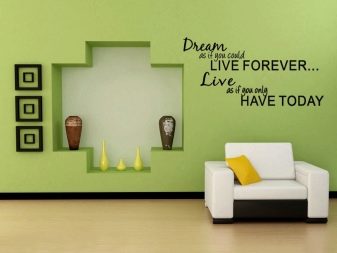
Ideas for different rooms
Different colors are suitable for different rooms, for example:
- For bedroom the best option would be delicate pastel and calm colors. Sharp contrasts should be avoided. It is recommended to choose exclusively high-quality formulations from well-known brands.
- For kitchen both cool and warm colors are suitable, for example, pink, peach and snow-white or emerald. The main thing is to correctly beat the walls with furniture and decor.
- In the room you can turn to color experiments. It can be calm and bright colors, as well as their original combinations. Do not forget about the correct selection of furniture for the living room for similar wall coverings.
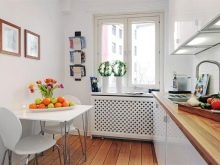
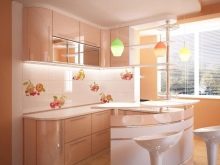

- The corridor it is better to arrange in light shades, otherwise it will seem too cramped and gloomy.
- The walls on the veranda it is recommended to paint with compositions of natural shades (grassy, brown, ash). Painted coatings, complemented by decorative brick or stone, look especially impressive and stylish.
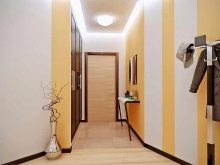
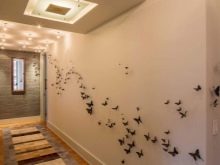

Preparing the walls
Before interior painting of the walls inside the dwelling, they need to be prepared. To begin with, old coatings are removed, and the base is checked for cracks and gross defects. If necessary, you need to putty the walls.
Also, experts recommend using a special acrylic primer as a base for painting.It will make the new coating more wear-resistant and durable.
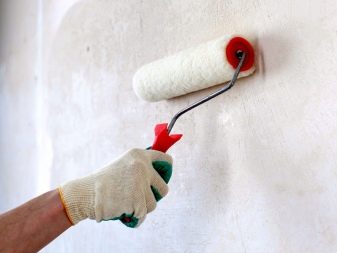
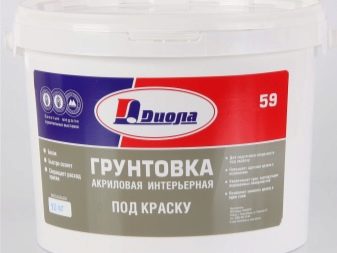
If we are talking about a wooden house or a wall inside a dwelling, sheathed with clapboard, then in such conditions, high-quality grinding of the wall surfaces should be performed, removing all dirt from them. Remove old paint, if any. If the previous coating is difficult to remove, then the base can be washed with 2% soda composition, then putty, cover with linseed oil and walk with a primer.
Now you should proceed to surface treatment with a special compound for putty and proceed directly to painting.
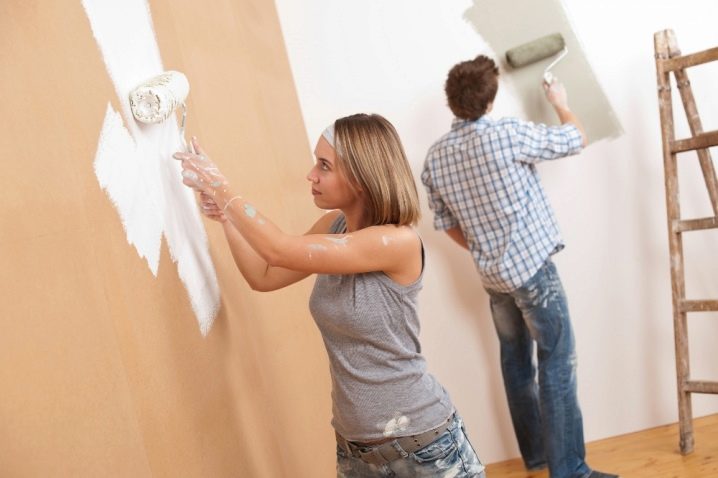
In preparing the walls for painting, only high-quality, branded mixtures should be used, otherwise the composition will lie inaccurately, and many wall defects cannot be hidden.
Do all work carefully. Do not leave any dust, dirt, or other such contaminants on the walls, otherwise they will manifest themselves on fresh paint.
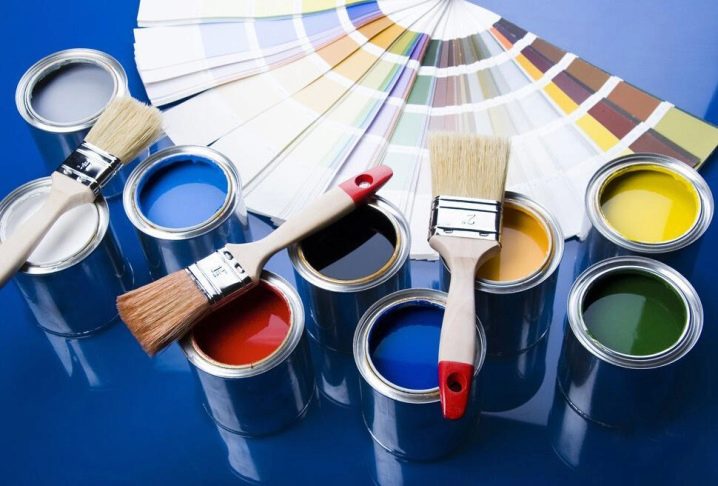
Useful tips for painting
So that the painting of the walls in the house or apartment does not bring you continuous disappointment, you should consider the following simple tips:
- Often, interior paint is applied in several layers. This is especially true for the water-based mixture. As a rule, using it, you do not need to wait for the next layer to dry before applying the next one. If you cover such a composition in one layer, then it will look sloppy.
- If you are painting a large room, then it is better to use high-quality rollers designed for painting different surfaces. Experts advise buying fur tools with a long pile and applying paint with them in large doses.
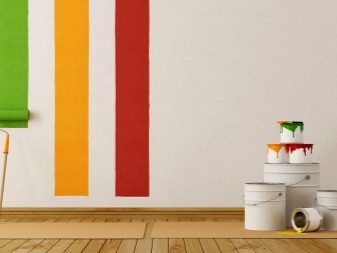
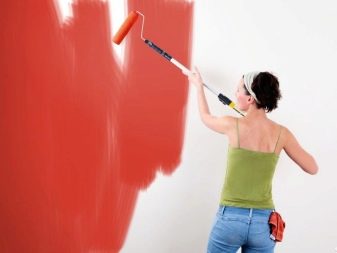
- When you move on to applying the final layer, it is worth using a roller that has medium-length villi.
- It is quite difficult to independently carry out competent preparation and painting of the walls. If you doubt your skills, it is better to turn to specialists.
- It is recommended to use only high quality and reliable paints of suitable shades. For example, many American and German brands with great reviews have great products. These products are more expensive, but they look better and last longer.
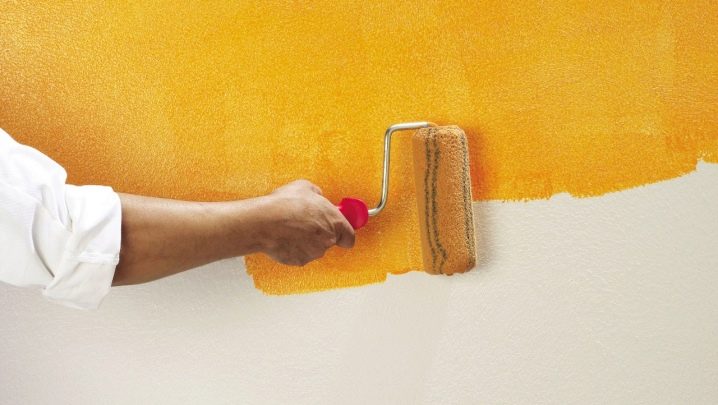
Beautiful examples in the interior
Fans of non-standard solutions should turn to bright and unusual colors. For example, a rich mixture of bluish-turquoise hue will be an extraordinary choice for a bedroom with dark parquet flooring, snow-white furniture and wooden sideboards / dressers.
The soft gray tint of the walls is an excellent and versatile solution. Against such a background, snow-white kitchen sets, beige soft corners, contrasting black chairs and tables, as well as details made of wood of all shades will look great.
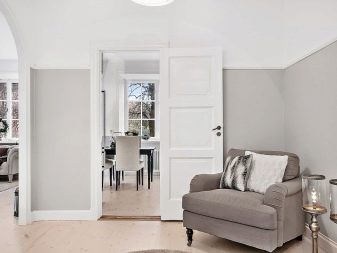

Interior paints with pleasant "green" can be safely used in ensembles with rich or pastel textiles and furniture in classic light shades (white, beige options). The floor in such an environment can be either light or dark, but it is better to make the ceiling snow-white.
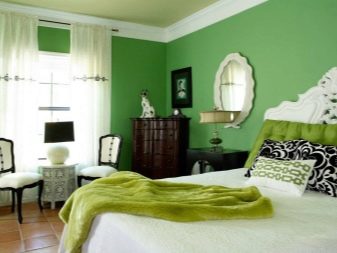
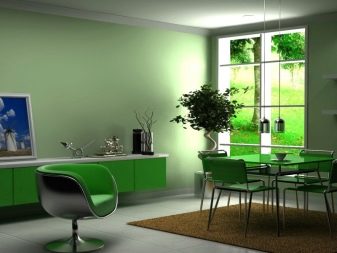
Accent walls always attract attention and decorate the interior. So, in a large living room with white painted walls, you can organize an accent insert with purple paint. Hang a TV on this covering, and put a sofa and armchairs in front of it.

You will learn more about the intricacies of successful wall painting in the following video.













The comment was sent successfully.